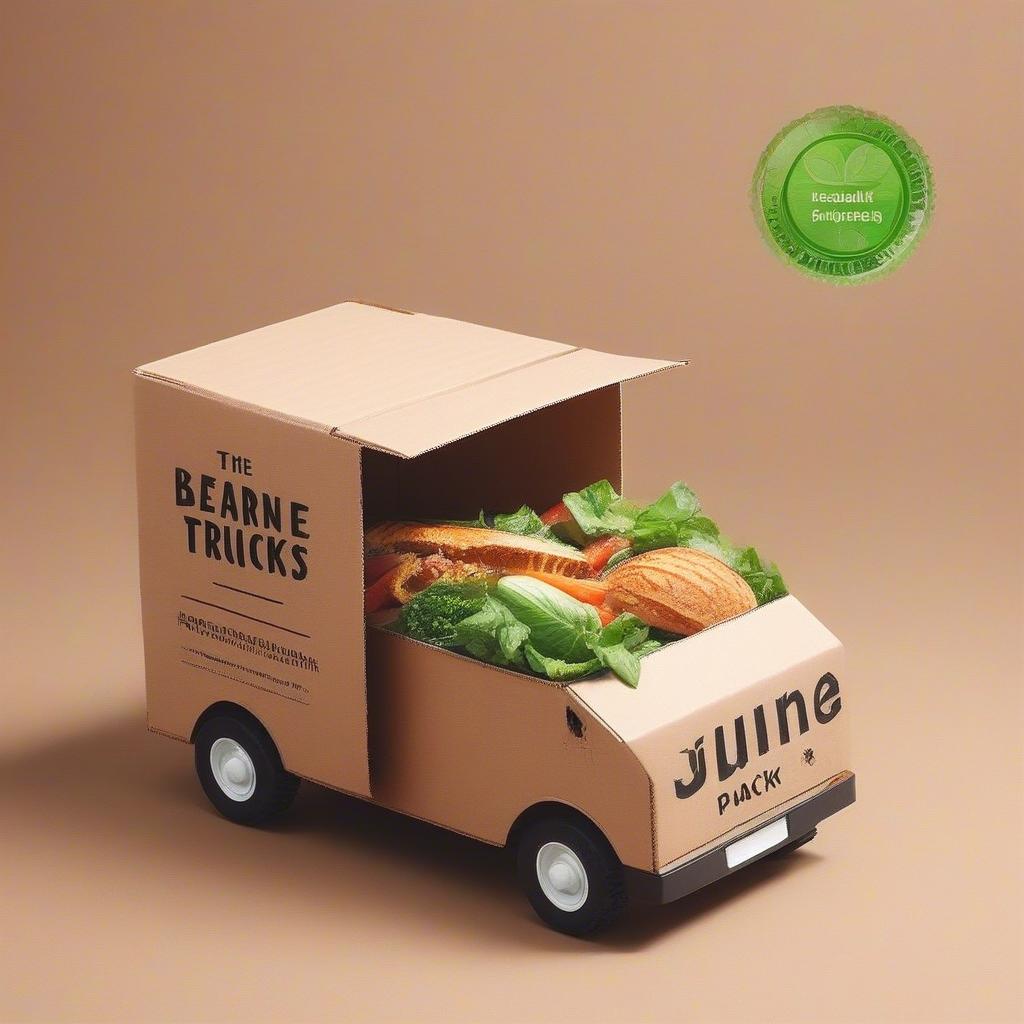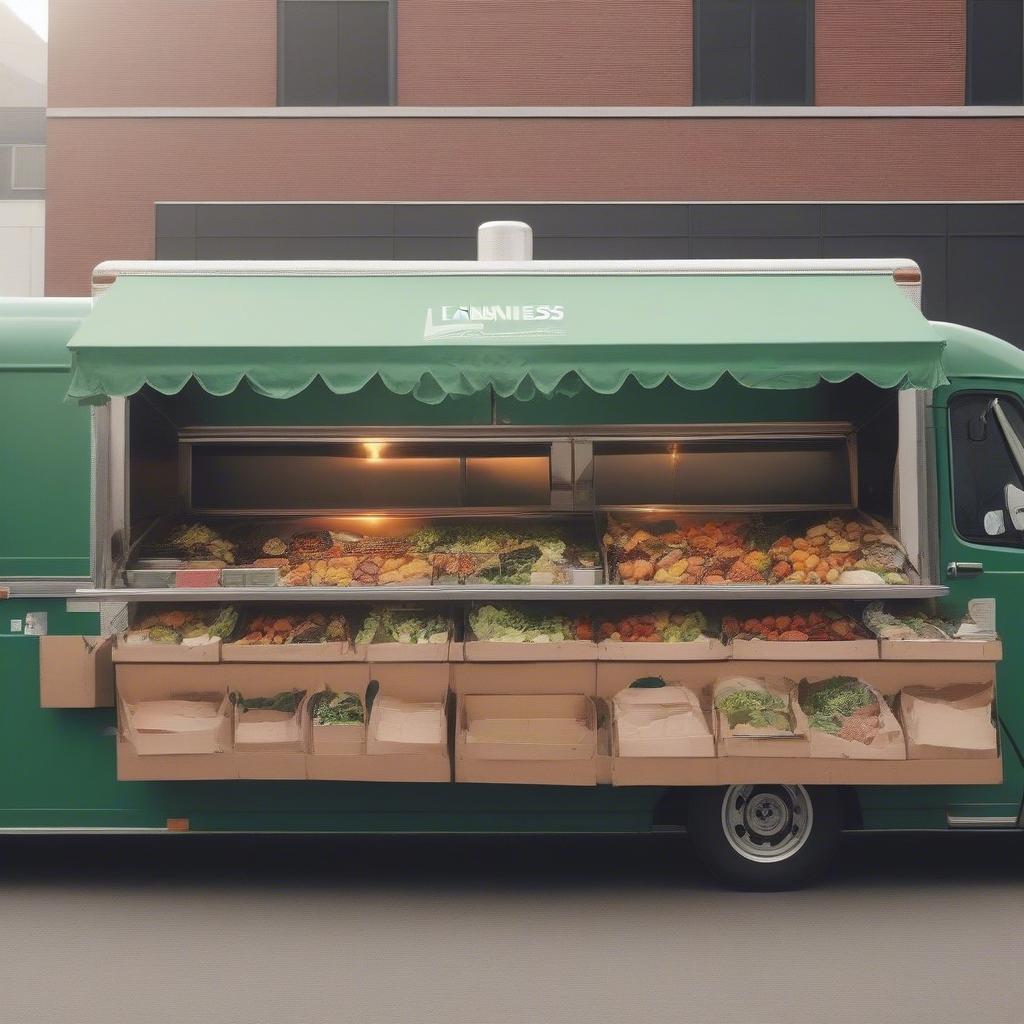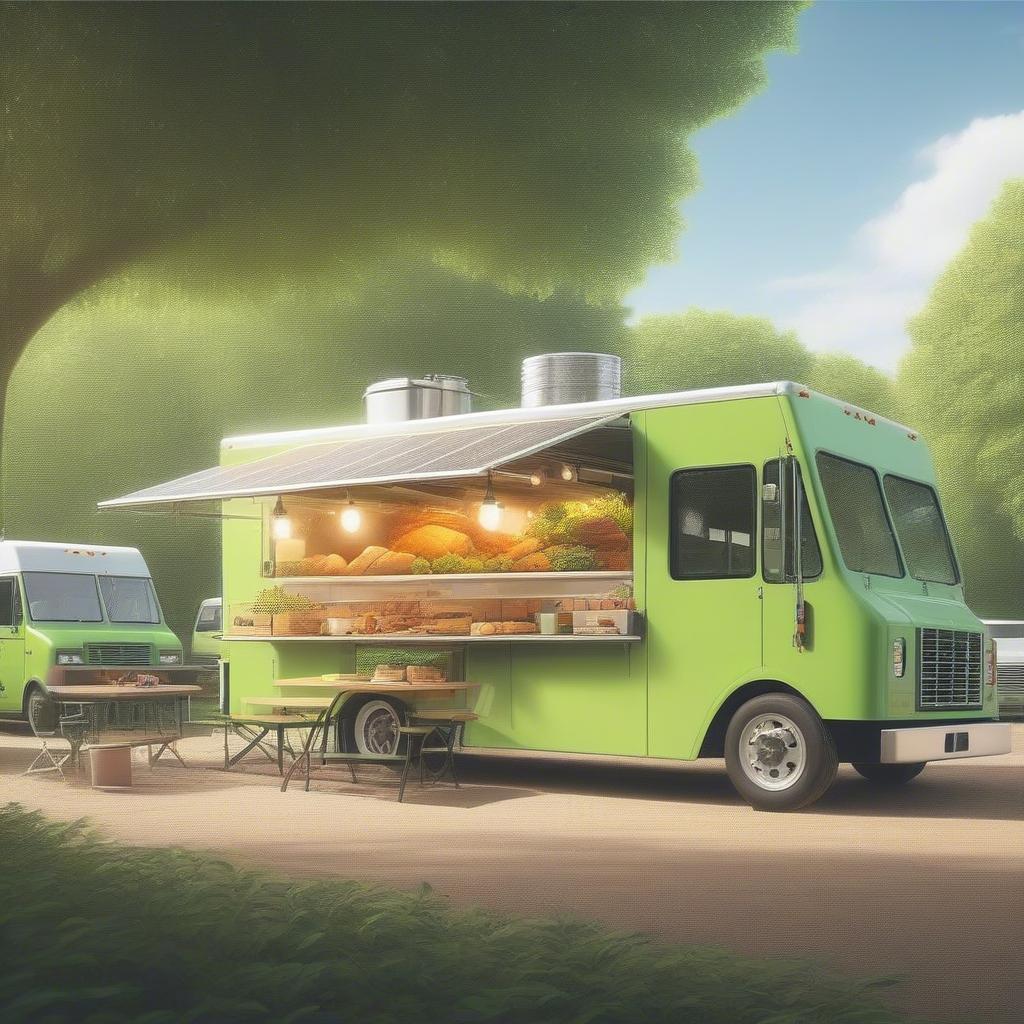
Fueling Your Food Truck Dreams: Affordable Scaling Strategies
The aroma of sizzling food, the rhythmic clanging of pans, the happy chatter of customers – owning a food truck is a vibrant dream. But what happens when you’ve conquered your corner of the street and the desire for more starts to bubble? Food truck expansion doesn’t have to be a wallet-draining ordeal. This article is your guide to affordable scaling, packed with practical tips and strategies to take your mobile kitchen to the next level without emptying your bank account.
The Why Behind the Growth: Understanding Your Motivations
Before diving into the “how,” let’s explore the “why.” Why do you want to expand your food truck business? Understanding your underlying motivations is crucial for making smart decisions. Are you aiming for:
- Increased Revenue? A common and understandable goal. More customers, more sales.
- Market Dominance? You want to be the go-to food truck in your area.
- Personal Fulfillment? Maybe you want to reach more people with your culinary creations.
- A Larger Team and Community? Expanding often means hiring more people and building a stronger team.
Knowing your “why” will help you focus your efforts and make sure your expansion strategy aligns with your long-term vision. This step is important when exploring growth tips, as not all options will be suitable for every business.
Assessing Your Current Situation: A Food Truck Health Check
Before embarking on any food truck expansion journey, it’s vital to take stock of where you currently stand. This involves an honest and thorough assessment of your current operations. Think of it like a health check-up for your business.
Financial Health Check
- Profitability: Are you consistently making a profit? How is your cash flow? Review your financial statements meticulously. Look for areas where you can streamline expenses.
- Debt: How much debt are you carrying? High debt can make expansion risky. Consider paying down existing debt before taking on new financial obligations.
- Budgeting: Do you have a detailed budget? A strong budget is essential for managing finances during expansion.
Operational Efficiency Check
- Menu: Is your menu streamlined and profitable? Are there items that are popular and others that could be cut?
- Staff: Are you efficiently staffed? Do you have any employee gaps or redundancies?
- Equipment: Is your equipment in good working order? Are there any upgrades you need to consider?
- Process: Are your processes smooth and efficient? This includes food preparation, order taking, and customer service.
- Inventory Management: Do you have an effective inventory system? Reducing waste is key to profitability.
Customer Insights Check
- Customer Feedback: What are your customers saying? Are there recurring themes in your feedback? Consider implementing a system to gather and review customer feedback regularly.
- Customer Loyalty: How loyal are your customers? Do you have repeat customers? Do you have any loyalty programs?
- Market Trends: Are you keeping up with the latest trends in the food truck industry? Are there new offerings or ideas you could incorporate?
This initial assessment is a vital component of your growth tips toolkit, helping you identify your strengths and areas needing improvement before you scale.
Smart and Scalable Strategies: Growth Tips for Food Trucks
Now that you’ve assessed your current position, let’s dive into some concrete strategies for affordable scaling. These growth tips are designed to be both impactful and budget-friendly.
1. Expand Your Footprint: Location, Location, Location
Your location has a significant impact on your success. Expanding your reach doesn’t necessarily mean purchasing another truck immediately. Consider these more cost-effective options:
- Strategic Scheduling: Analyze your current sales data. Are there slow periods? Explore new locations or events during those downtimes.
- Partnering with Events and Festivals: Secure spots at local farmers’ markets, festivals, and community events. This offers access to large crowds and new customers.
- Pop-Up Events: Organize pop-up events in different areas. This allows you to test new locations without making a long-term commitment.
- Catering Services: Catering events can be a lucrative way to increase revenue and build your brand. Consider specializing in corporate events, weddings, or private parties.
Example: Instead of only parking downtown during lunch, try attending a weekend farmers market or partnering with a local brewery for a food truck night.
2. Enhance Your Online Presence: Digital Marketing on a Budget
In today’s digital age, a strong online presence is essential for any business, especially a mobile one.
- Google My Business Optimization: Ensure your Google My Business listing is complete and accurate. Include high-quality photos of your truck and food.
- Social Media Engagement: Focus on platforms where your target audience spends time. Share mouth-watering photos, behind-the-scenes glimpses, and special offers. Engage with your followers, respond to comments and messages promptly.
- Local SEO: Optimize your website and online listings for local search terms (e.g., “best tacos near me”).
- Email Marketing: Build an email list and keep your customers updated on your locations, menu changes, and promotions. Offer exclusive deals to subscribers.
- Partnerships with Influencers: Collaborate with local food bloggers or social media influencers to promote your food truck to their audiences.
Example: Create a Facebook or Instagram post every day highlighting your menu and location, and running contests for free food or discounts.
3. Streamline Your Operations: Efficiency is Key
Improving your operational efficiency not only saves you money but also allows you to serve more customers.
- Menu Optimization: Focus on dishes that are high-profit, easy to prepare, and use common ingredients. Minimize menu items that require specialized equipment or ingredients.
- Inventory Management: Implement a system to track your inventory, reduce waste, and order strategically.
- Technology Solutions: Explore Point of Sale (POS) systems and mobile ordering apps to streamline the order-taking process.
- Staff Training: Invest in proper staff training to ensure consistency in food quality and service.
- Cross-Training: Train your employees on multiple roles so you can effectively adapt to changing needs.
Example: Use a POS system to track which menu items are most popular, and then focus on those items when planning your menu and inventory.
4. Leverage Your Existing Customer Base: Loyalty Pays
Your current customers are your best advocates and a goldmine for repeat business. Nurturing customer loyalty is an essential element of affordable scaling.
- Loyalty Programs: Implement a loyalty program to reward repeat customers. Offer discounts or free items for repeat purchases.
- Customer Feedback: Actively solicit and use customer feedback to improve your offerings and experience.
- Personalization: Remember your regulars’ names and preferences. This goes a long way in fostering loyalty.
- Referral Programs: Encourage your customers to refer their friends and family. Offer rewards for successful referrals.
- Special Occasions: Run specials or promotions on holidays or special occasions.
- Community Engagement: Participate in local community events to build relationships and brand awareness.
Example: Start a punch card system that gives customers a free item after they buy a certain number of meals.
5. Strategic Partnerships: Strength in Numbers
Partnering with other local businesses can be a fantastic way to reach new customers without significant cost.
- Cross-Promotions: Collaborate with complementary businesses (e.g., a coffee shop or a local brewery). Promote each other’s businesses.
- Shared Events: Organize events together with other businesses, splitting promotional and operational costs.
- Ingredient Sourcing: Partner with local farmers or suppliers to get fresh ingredients at a lower cost.
- Community Partnerships: Partner with local non-profits to show your community involvement and gain good PR.
Example: Partner with a local coffee shop to offer a meal and coffee combo or share a promotional event together.
6. Optimize Your Menu and Pricing: The Art of Profitability
Your menu is more than just a list of your offerings; it’s a key to your profitability.
- Cost Analysis: Regularly analyze the cost of each menu item. Identify items that are not generating enough profit.
- Pricing Strategy: Adjust prices based on your cost analysis and competitor pricing.
- Seasonal Specials: Offer seasonal specials using locally available ingredients to reduce costs and appeal to your customers.
- Value Bundles: Create value bundles to encourage customers to order more items.
- Limited-Time Offers: Offer limited-time offers to create excitement and attract new customers.
Example: Adjust your prices based on the ingredients you are using, or create a bundle that includes a side dish and a drink at a discounted rate.
7. Consider a Second Truck: A Gradual Approach
Once your existing truck and strategies have proven successful, consider adding a second truck. However, do it wisely.
- Leasing Instead of Buying: Leasing a second truck can reduce the initial investment compared to purchasing a new one.
- Staggered Investment: Don’t invest in a second truck unless your business can comfortably support it.
- Test and Learn: Before making a big purchase, rent a truck on a trial basis to see if it’s a viable addition to your business.
- Target Specific Locations: Use the second truck for specific events or locations. This will allow you to test potential markets for future expansion.
- Brand Consistency: Ensure the second truck reflects your established brand, menu, and quality standards.
Example: Rent a truck for a month to test a new area or a special event and see if the revenue justifies the expense.
Avoiding Common Pitfalls: Staying on the Road to Success
While scaling can be exciting, it’s important to be aware of the common pitfalls that can derail your growth plans.
- Overspending: Avoid taking on too much debt or making large investments too quickly.
- Lack of Planning: Develop a detailed plan and a budget for your expansion. Don’t make impulsive decisions.
- Ignoring Cash Flow: Monitor your cash flow closely. Ensure you have sufficient funds to cover operating expenses.
- Loss of Quality: Ensure your food and service quality remain consistent as you expand. Don’t sacrifice quality for quantity.
- Neglecting Customer Feedback: Always listen to your customers. Respond to their concerns and feedback promptly.
- Burnout: Expansion can be stressful. Make sure to take care of yourself and your team. Delegate tasks when possible.
By being mindful of these potential issues, you can navigate the expansion process more effectively and avoid costly mistakes. Remember, steady, consistent growth is better than a rapid but unsustainable expansion.
Learn Business: Your Partner in Food Truck Expansion
At Learn Business, we understand the unique challenges faced by small businesses like food trucks. We’re dedicated to providing the guidance and support you need to achieve your goals, including expansion and growth. We offer a range of resources designed to help you make the best business decisions.
How can Learn Business help you with your food truck expansion?
- Business Plan Templates: We offer customizable business plan templates tailored for the food truck industry. These templates provide the framework for a solid strategy, helping you set clear goals and track your progress.
- Financial Projections: Use our financial templates to forecast your revenue, expenses, and profitability during the expansion phase. Our templates are designed to help you manage your cash flow and assess your financial viability.
- Marketing Plan Templates: Develop effective marketing strategies to reach new customers. Utilize our templates to create a detailed marketing plan, outlining your objectives, target audience, and marketing channels.
- Operational Tools: Streamline your operations with our customizable checklists, inventory management templates, and employee scheduling tools. Efficient operations are essential for scaling successfully.
- Expert Advice and Support: Access our expert-curated content, webinars, and mentorship programs to gain insights and guidance specific to your business needs.
We believe in your potential and are committed to providing the resources you need to scale your food truck business sustainably and affordably. Learn Business is more than just a platform; it’s your partner in success.
Conclusion: Your Journey to Food Truck Success
Expanding your food truck business doesn’t have to be a daunting or expensive undertaking. By implementing strategic and affordable scaling strategies, you can achieve your food truck expansion goals without jeopardizing your financial stability. Embrace a combination of operational efficiency, smart marketing, and customer-focused practices, to cultivate sustainable growth. Always remember to listen to your customers, stay true to your brand, and adapt to the ever-evolving market landscape. Remember, the journey is just as important as the destination. Embrace the challenges, celebrate the successes, and enjoy the ride as your food truck reaches new heights. With a little planning, hard work, and the right tools and growth tips, your dreams of expansion can become a flavorful reality. And always remember, Learn Business is here to support your journey!



Leave a Reply